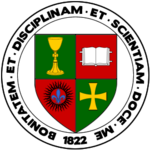
The University of St. Michael's College is a federated college of the University of Toronto. It was founded in 1852 by the Congregation of St. Basil and retains its Catholic affiliation through its postgraduate theology faculty. However, it is primarily an undergraduate college for liberal arts and sciences.
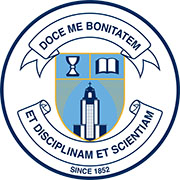
St. Michael's College School, is an independent, Catholic school for young men in Toronto, Ontario, Canada. Administered by the Basilian Fathers, it is the largest school of its kind in Canada, with an enrolment of approximately 750 students from grades 7 to 12. It is known for its high standard of academics and athletics, notably its ice hockey, football and basketball programs. The hockey program has graduated numerous future National Hockey League ice hockey players. The basketball and football programs have graduated multiple NBA, NFL, and CFL players. St. Michael's College School is the affiliate school of Holy Name of Mary College School, an independent, Catholic all-girls school in Mississauga. St. Michael's was part of the Metropolitan Separate School Board from 1967 to 1985, but has subsequently operated within the Conference of Independent Schools of Ontario Athletic Association.

St. Thomas More College (STM) is a Catholic, undergraduate, liberal arts college located in Saskatoon, Saskatchewan, Canada, and is a federated college of the University of Saskatchewan.
George Bernard Flahiff, CC, C.S.B. was a Canadian prelate of the Roman Catholic Church. He served as Archbishop of Winnipeg from 1961 to 1982, and was elevated to the cardinalate in 1969.
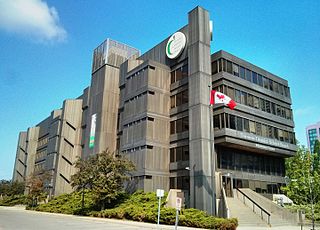
Education in Toronto is primarily provided publicly and is overseen by Ontario's Ministry of Education. The city is home to a number of elementary, secondary, and post-secondary institutions. In addition to those institutions, the city is also home to several specialty and supplementary schools, which provide schooling for specific crafts or are intended to provide additional educational support.

Thomas Michael Rosica, C.S.B. is an American Catholic priest, author, and Basilian Father. He was formerly chief executive officer of Salt + Light Catholic Media Foundation, English-language media attaché of the Holy See Press Office, and president of Assumption University in Windsor, Ontario. He resigned from Salt + Light and other positions in 2019 following substantiated allegations of plagiarism.
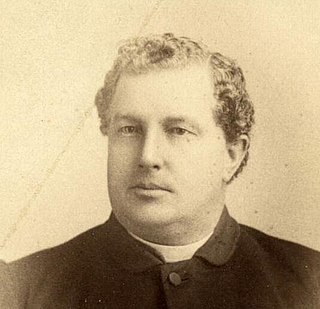
Denis Thomas O'Connor was a Canadian prelate of the Catholic Church. The first member of the Congregation of St. Basil to become a bishop, he served as Bishop of London (1890-1899) and later as the first Canadian-born Archbishop of Toronto (1899-1908).

The Order of Saint Basil the Great, also known as the Basilian Order of Saint Josaphat, is a Greek Catholic monastic order of pontifical right that works actively among Ukrainian Catholics and other Greek-Catholic churches in central and Eastern Europe. The order received approbation on August 20, 1631, and is based at the Monastery of the Holy Trinity, Vilnius.
Michael Joseph Dudick was an American priest and bishop of the Byzantine Catholic Metropolitan Church of Pittsburgh, the U.S. branch of the Ruthenian Catholic Church.
John Richard Cavanaugh was an American priest, teacher, and scholar.

Reverend Eugene Carlisle LeBel, C.S.B., C.D., LL.D, was a Canadian academic and religious leader, who spent much of his life in Catholic schools, both studying and teaching. He is best known for his efforts to introduce academic changes to Assumption College, leading it to become Assumption University of Windsor and later the non-denominational University of Windsor.

St. Basil's Church, built in 1856, is the founding church of the Congregation of St. Basil in Toronto, Ontario, Canada, the college church of St. Michael's College, Toronto, and a parish church serving a large local congregation.

St. Basil-the-Great College School is a Roman Catholic secondary school of the Toronto Catholic District School Board located in Toronto, Ontario, Canada.
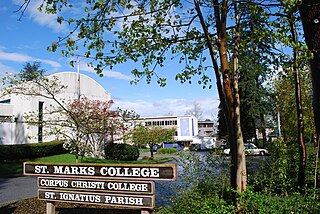
St. Mark's College is a Catholic theological college affiliated to the University of British Columbia. It was founded in 1956 by the Congregation of St. Basil for graduate studies and undergraduate studies at Corpus Christi College founded in 1999 as a liberal arts college. As of August 2022, Dr. Gerry Turcotte is the president of Corpus Christi College and is the principal of St. Mark's College and the community. The college is situated on the University Endowment Lands on West Point Grey on the UBC Campus. The college hosts the local parish church, St. Mark's Church.

St. Mark's Church is a Roman Catholic Parish church at St. Mark's College (Vancouver). The parish serves the community of Point Grey through the University of British Columbia campus in Vancouver, British Columbia, Canada. St. Mark-Corpus Christi College is on the University Endowment Lands. It was founded in 1967 by the Congregation of St. Basil and since 2007 it has been served by the Society of Jesus - the Jesuits.
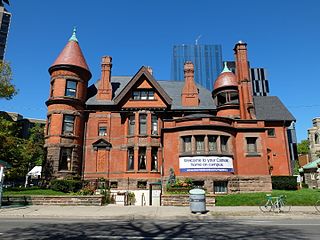
Newman Centre is the Roman Catholic university chaplaincy for the University of Toronto. It is housed in what was the home of Wilmot Deloui Matthews. It is located at the corner of Hoskin Avenue and St. George Street, across from the Robarts Library on the University of Toronto campus. It is under the direction of the Archdiocese of Toronto and is associated with the neighbouring St. John Henry Newman Catholic Church.
Richard Corneil is a Canadian academic administrator.
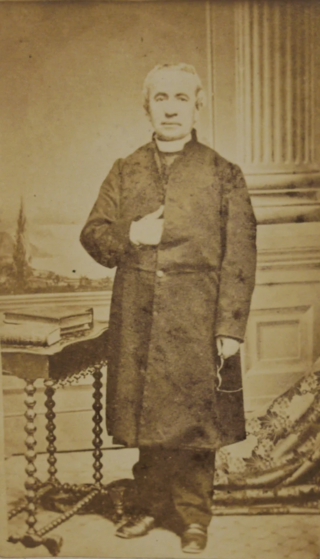
Jean-Mathieu Soulerin was the fourth Superior General of the Congregation of St. Basil and primary founder of the University of St. Michael's College in Toronto, Canada.

Fr. Charles Vincent was a Catholic priest, professor, and academic administrator at the University of St. Michael's College in Toronto, Canada.

Robert Kasun is a Catholic auxiliary bishop of the Archdiocese of Toronto and Titular Bishop of Lavellum.
